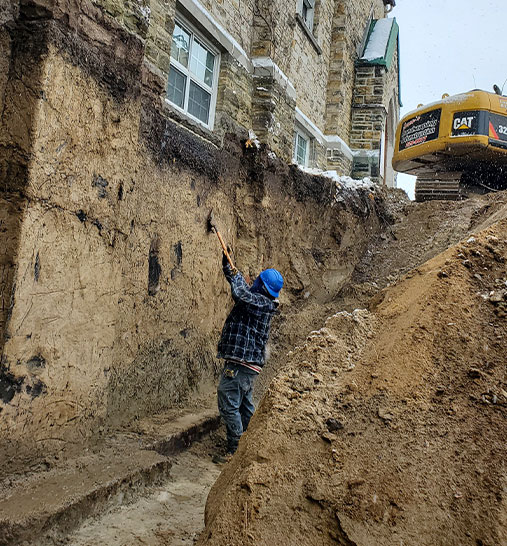If your home is affected with a settling foundation, fixing the problem eventually is important. The muse repair manner in which your own home needs is dependent upon several existing conditions, like the symptoms your property is experiencing, the composition and compaction in the soil through your house, how long down stable conditions are located and the form of foundation in need of support.

Most kinds of foundation repair don’t qualify as DIY projects and wish the data and tools of the trained professional. However, understanding the situation and knowing the solutions are valuable tools when hiring a contractor or foundation repair expert.
Identifying Foundation Problems
Foundation problems often show themselves in subtle ways to start with. If you notice small cracks within the basement walls or water intrusion after heavy rainfall. Often, those minor issues are nothing a lot more than annoyances and aren’t symptoms of an important issue. However, just as often, they’re warning signs of bigger problems into the future otherwise handled immediately. If you see small signals genuinely, have a professional have a look to guage the problem.
In the event you begin to find doors in your house that will no longer open or close easily, windows that are challenging to operate, gaps developing in trim work or cracks in the drywall, immediate attention is essential in order to identify and repair what is an important foundation problem.
Permanent Foundation Repairs
There are lots of approaches to reestablish support for the home’s foundation. The most suitable choice depends upon the soil composition beneath the house and also the that has to have repair.
Steel Piers
Most of the time, installing steel piers under your residence is the most beneficial long-term treatment for stabilize the foundation-It’s even the costliest. Because of this repair, galvanized steel posts are forced deep in the ground beneath the foundation. The piers can go as deep as necessary to reach bedrock or soil that’s compact enough to supply enough support.
Steel piers can conduct massive quantities of weight, be employed in virtually any upper soil condition and so are considered a lasting repair.
Helical Piers
Helical piers are another permanent foundation repair method created from galvanized steel. Essentially, they’re steel posts that twist in to the ground using a helically-shaped leading point that resembles a screw or auger and pull the pier deeper underneath the surface when turned by large machinery.
Helical piers are wonderful for supporting the huge weight of your home and foundation while not having to reach bedrock. The tools are drilled into the ground until they reach heavy soil compact enough to compliment the strain prior to being permanently coupled to the house.
Concrete Piles
Concrete piles are simply blocks or cylinders of pre-cured concrete. They can be several inches long and wide or many feet thick and long. The piles are forced or placed beneath the foundation into compacted soil and may contain one piece or several stacked together with each other.
Concrete piles are a lower-cost replacement for steel piers. However, the soil below your home determines if they’re an adequate remedy for your foundation.
Poured Concrete Piers
Poured concrete piers are another lower-cost foundation repair solution in the event the conditions are right under your home. The strategy contains digging a substantial hole under the foundation, filling it with wet concrete and allowing it to cure before attaching it on the home.
Poured concrete piers are useful in lots of soil conditions and may resemble simple cylinders or be designed with a bell shape towards the bottom to supply increased support.
Minor Foundation Adjustments
Sometimes your own home may go through foundation problems that aren’t severe enough to warrant a heavy-duty repair but nevertheless need to be handled to prevent bigger issues.
Slab Jacking
If the home rests with a concrete slab that is unlevel or that shows cracks from soil erosion, slab jacking may solve the issue. Slab jacking involves drilling holes in an existing slab and injecting a concrete slurry or dense reboundable foam under the failing section.
Slab jacking is a common solution for sagging sidewalks, driveways and garage floors. If your home’s slab foundation rests on sufficiently compacted soil, slab jacking can offer a permanent solution to sagging.
However, slab jacking isn’t a heavy-duty repair method. A whole repair may involve multiple application as soil is constantly on the erode or settle.
Shimming
New homes are sometimes built on ground that won’t have been sufficiently compacted before their foundations were constructed. Following the residence is complete, that soil can shift or erode, resulting in gaps involving the foundation along with the remaining portion of the home’s structure. The condition may or may not be an indication of more problems.
After an inspection with the situation, your foundation expert or structural engineer may decide that filling the gap with steel shims is adequate for reestablishing proper support. Shims perform as being a permanent solution if the soil stops settling underneath the home. However, if gaps reappear, a more invasive repair likely needs to happen.
More information check this useful website: https://ecfoundations.com
